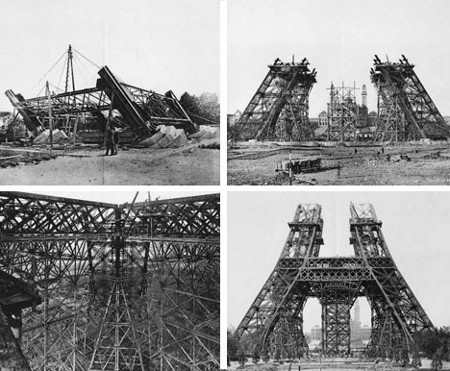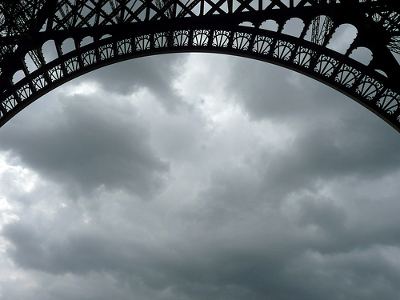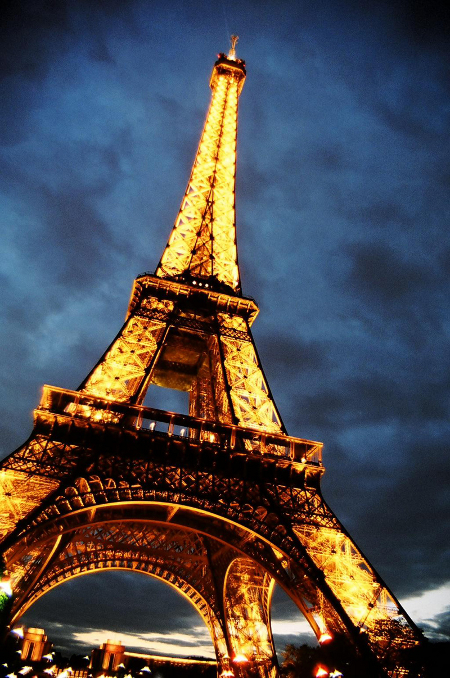The History of the Eiffel Tower
One of the most prominent landmarks in France is of course the Eiffel Tower. In fact, it is one of the most recognizable structures in the world. While the Eiffel Tower is an iconic image and recognized as purely French, many don’t quite know the entire history of this landmark. Here is the fascinating story behind the Eiffel Tower.
The Eiffel Tower was originally built during the years of 1887 to 1889 for the Exposition Universalle, which is known as the World’s Fair. The World’s Fare specifically took place in Paris to commemorate the centennial of the French Revolution which brought democracy to France. The Eiffel Tower which was designed by architect Gustav Eiffel was positioned as the arch gateway for the World’s Fair and continues to be located at the Champ de Mars which is next to the Seine River.
The Eiffel Tower was inaugurated on March 31, 1889; however it was opened to the public on May 6th of that year. Just an interesting fact regarding this infamous tower is that at first, Gustav Eiffel wanted to build his tower in the city of Barcelona, Spain for the Universal Exposition in 1888. However the city of Barcelona thought at the time, the tower was too expensive and did not fit the style of the city. The city hall of Barcelona voted against the proposal, ultimately sending Gustav Eiffel to submit his plans to the city of Paris.

Today, the Eiffel Tower is one of the many aesthetic beauties in Paris, however from the original outset of planning and construction to several years after the Exposition Universalle, the Eiffel Tower was panned and viewed by many as an eye sore- which would be seen as sacrilegious today.
The Eiffel Tower was constructed over a 3 year period- 1887-1889. With the help of about 300 men, the tower was constructed and today stands at a total height of 1,063 feet high (324 meters). This includes a 79 foot (24 m) antenna added years later. It is about 81 stories of a conventional skyscraper. In fact, from its initial construction till 1930, when the Chrysler Building was constructed, the Eiffel Tower was the tallest man made structure in the world. The Chrysler Building was a total of 1,047 ft (319 meters), but the Eiffel Tower did not have the addition of the radio antenna.
Materials Used to Construct the Eiffel Tower
The Eiffel Tower is constructed out of a pure iron metal named puddled iron. A total of over 18,000 pieces of iron was used in the construction. These pieces of iron were held together with over 2.5 million rivets. The iron used in the construction weighs about 7,300 tonnes. However, this is not the entire weight of the Eiffel Tower, the gross weight including the platforms- there are three totals over 10,000 tonnes. During the construction it should be noted that only one person died. Constructing the tower is much more different than a normal building, as the tower is an open air structure with only 3 platforms available. However Gustav Eiffel employed a variety of safety features which helped to keep deaths and injuries to a minimum. Some of the safety features he employed included: movable staging, screens and guard rails.

It should be noted that Gustav Eiffel created the design of the tower using mathematics to determine the least resistance to wind. This is why the bottom four points of the tower are bulky and strong, while the tower itself is thin and open. The Eiffel Tower is painted mostly a mix of grey and brown paint. About every 7 years or so, about 50 to 60 tonnes of paint are used to protect the structure from rust.
The Three Levels of the Tower
There are a total of three levels of the Eiffel Tower. The first and second levels can easily be accessed by stairs or an elevator. On the first floor of the tower, one can take in the many sights, find shopping available and even food and beverage choices. On the second level, you will find souvenir shops, an observation deck and a private entrance to fine dining. The third level is only accessible by elevator. On the top level, you will find two different observation decks- one inside and one outside. In addition, you will find the engineers office and a representation of Gustav Eiffel’s original office.
The Tower Was Originally Built to Stand for 20 Years
Originally, the city of Paris signed a lease that the Eiffel Tower can be constructed and stand for 20 years. In fact, the tower was built so that it can be disassembled rather easily. However, over the next couple of decades, Parisians fell in love with the tower, as well as more practical uses of the tower- beaming radio waves. From the early 1900’s to 1950, the tower was utilized for beaming radio stations and telegraphy. There was even wires that ran from the tower’s radio antenna to anchor of the tower where there were a bunker which housed radio equipment. This radio equipment was utilized by both the military and commercial entities and it proved to be highly useful during World War I, when the tower’s radio antenna played an important role in capturing the famous spy Mata Hari. In later years, it was used to beam television signals and today it is one of the most visited landmarks in all of France. In fact, since its construction, more than 200 million have visited the tower (recent visitor counts are about 6.5 million each year).

Through the Years
Throughout the years, the Eiffel Tower has played a huge role in the culture and history of France. During the years of 1925 to 1934, the tower was used as an electric light billboard to advertise Citroen. During World War II, the Germans used the tower as propaganda. In 1940, before Hitler could visit the Eiffel Tower, French nationalists cut the elevator lift cables, so Hitler would have to walk up the stairs to the observation deck. At the time, the parts to fix the cables were unavailable due to the war. In fact, Hitler never climbed the tower, staying on the ground. Many state that Hitler was able to conquer France, but never the Eiffel Tower. In addition, when the Germans, tried to hoist giant swastika flags on the top level of the tower, the wind blew the flags off the tower in just a few hours.
Finally the Eiffel Tower averted disaster when in the final days of the war, Hitler ordered General Dietrich von Choltitz, which at that time was the military governor of Paris to demolish the tower along with the rest of the city. However, General Dietrich von Choltitz did not follow the order and within just a few hours of the liberation of Paris by the Allied forces, the elevator lift cables were working again and the tower soon reopened.
Today, the Eiffel Tower continues to be a cultural icon and one of France’s most beloved landmarks. While the Eiffel Tower continues to be updated with new restaurants and shops, it has retained it’s essence from its earliest days. You can also read more here about French history of Limoges to learn more valuable info!

